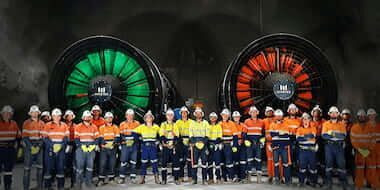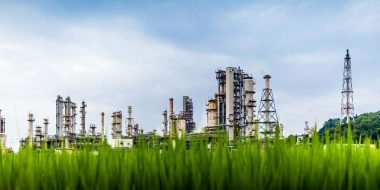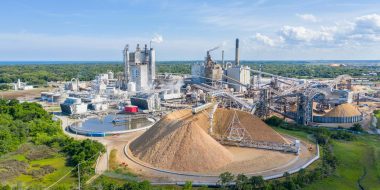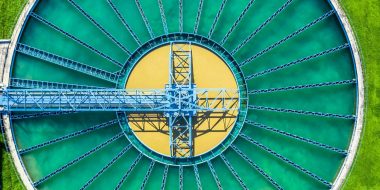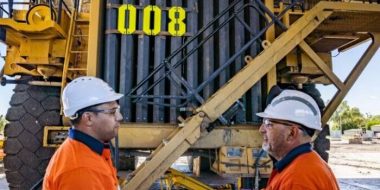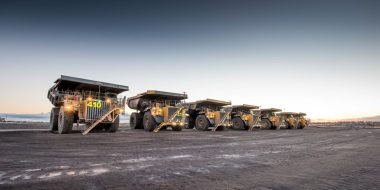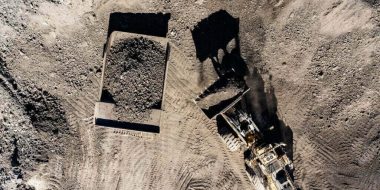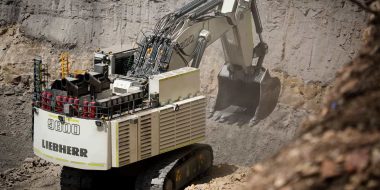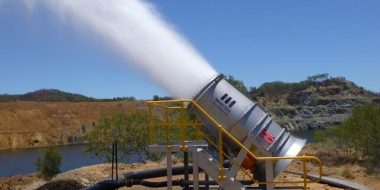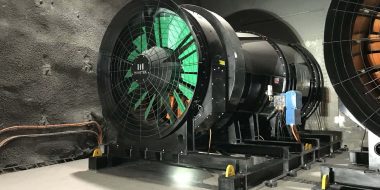In the mining industry, regulations and compliance are of utmost importance. These regulations are enforceable, and breaches can result in fines, prosecution or direction to cease operations and undertake remedial action. Therefore, it’s crucial for mining companies to effectively manage noise in order to minimise and prevent the adverse repercussions.

Noise control standards, acts & guidelines in Australia
Noise can come from a whole host of sources across a mining site. From the processing plants, machinery, traffic, and blasting, noise is often an unavoidable part of life on a mine site. While some levels of noise pollution can’t be avoided, proper planning and foresight can help to minimise its impacts. There are a number of reasons why noise control on a mine site simply cannot be neglected. First and foremost, it is essential to note that an effective noise control strategy on a mine site is required by law. Just as with the construction industry, noise must be carefully managed and kept to a minimum so as to not disrupt surrounding communities and animal populations.
In Australia, it is explicitly stated in the Mines Safety and Inspection Act 1994 that employers have a responsibility to provide a working environment that is free from as many hazards as practicable [1]. This includes the hazard of noise and the prevention of noise-induced hearing loss. EPA and several other government regulators also have a role in managing noise and its impacts in Australia. The EPA regulates the mining industry through Environment Protection Licences, which set limit, operating, monitoring and reporting requirements.
Following government guidelines on mining operations in Western Australia, is a regulatory requirement for action to be taken when workers are exposed to either of these two criteria:
- An average noise level of more than 85 dBA for an eight-hour working day
- A peak noise level higher than 140 dBA
There are also more specific regulatory requirements for noise control, emphasising the need for engineering controls to reduce noise, specifically the Mines and Safety Inspection Regulations 1995. The MSIR states that all mining sites must be monitored regularly for sound levels, placing a strong emphasis on engineering controls that can reduce sound levels or eliminate them entirely [2]. These regulations mean noise control should begin at the source by substituting processes or machinery. Currently, there is a heavy reliance on hearing protectors, such as PPE, which are not as effective as sound attenuation when managing noise pollution.
Typical mine site noise levels
The table below demonstrates the average sound level of various mining equipment, as measured at the ear of the operator.
| Mining equipment | Sound level (dBA) |
| Rotary drills | 73 – 100 |
| Percussion drills | 102 – 120 |
| Haul trucks | 84 – 109 |
| Electric shovels | 75 – 90 |
| Crawler tractors | 95 – 105 |
| Front end loaders | 93 – 105 |
| Graders | 85 – 100 |
| Coal augers | 90 – 99 |
Source: Management of noise in Western Australia mining operations
How is noise monitored on Australian mine sites?
Australian mines have stringent regulations for managing noise on mining sites. Regular and accurate noise monitoring is crucial to ensure legal compliance and avoid penalties. There are two main ways of monitoring noise on a mining site;
- Attended noise monitoring
This typically occurs on a monthly basis, with key personnel monitoring and measuring specific mining activities to accurately determine their contribution to the overall noise level. Attended noise monitoring is key in determining whether noise levels are in compliance with ongoing regulations.
- Continuous unattended noise monitoring
In many mining operations, sound level meters are placed at certain receiver points to capture noise information and assess site noise levels continuously. This is a general requirement for mine sites, as these systems provide an accurate representation of the noise environment.

Noise management plan
Unmanaged noise pollution can have a variety of adverse effects on the environment and local communities. That’s why it is essential for mining companies to understand why noise mitigation and management is so important and how they can take steps to reduce the amount of noise generated by their operations. By implementing effective strategies to reduce sound levels generated by their operations, mining companies can ensure that they are doing their part to protect the environment and their employees from unnecessary harm caused by excessive sound pollution.
Regulatory noise management
Similar to the construction industry, there are regulatory measures set in place by the government to ensure that noise is carefully controlled. Before any prospective mining operation begins, the expected noise outputs will have to be reported as part of the Environmental Impact Assessment (EIA), which then determines the viability of the mining project.
The Environmental Protection Agency (EPA) regulates all aspects of mining operations, from exploration to closure. Mining companies must comply with a range of environmental regulations, such as those pertaining to air quality, water quality, soil contamination, habitat protection, and, in this case, noise pollution [3]. Mining companies must ensure that they comply with all relevant local and national noise regulations when operating an existing mine. This includes completing any required paperwork or notifications as well as regularly monitoring SPL levels in accordance with government guidelines. Non-compliance with these regulations could result in costly penalties and reputational damage for your business; therefore, you must stay up-to-date on any changes or updates regarding applicable laws pertaining to your operations [3].
Safety of workers
There is a multitude of safety hazards posed to miners as a result of prolonged noise exposure. High noise levels can interfere with concentration and communication between miners. This can prove fatal if workers cannot hear warning signs above the high noise level of the workplace. It can also lead to permanent hearing loss, persistent noise stress, fatigue, and reduced quality of life.
Employers and management have a duty of care to provide workers with a mining workplace that is as free from hazards as possible, including noise hazards. When they fail to do so, the subsequent health hazards caused to their workers can have negative economic consequences.
Impacts on the larger community
Community compliance is an important part of any mining operation. Mines need to work with the local community to ensure their environmental and safety regulations are met, as both communities and mining operations are reliant on one another. Mines need to work with communities to ensure levels are met and avoid costly fines and reputational damage, while mine expansions are unlikely to be approved if they don’t meet noise levels and nearby communities complain. Conversely, local communities rely on mining operations for jobs and investment. Communities and mining operations need to support one another in order to stay operational.
Australian wildlife will also be adversely affected by high noise levels. Besides having physical effects on their ability to navigate or hunt, it can also lead to the forced migration of species, causing an imbalance in the greater ecosystem.

Reduce noise levels with Sound Attenuation
Sound attenuation is an effective noise control technique used to reduce sound by absorption. Sound energy is transferred into heat, thus resulting in the medium used for sound attenuation getting warm. By integrating sound attenuation into mining equipment and machinery, the noise levels of mining sites can be reduced.
Minetek offers a range of sound attenuation packages and noise management solutions that are specifically engineered for your machinery and can tackle high noise levels at the source. Contact us to find out how Minetek can help your noise management needs.
References
- Department of Mines and Petroleum – http://www.dmp.wa.gov.au/Documents/Safety/MSH_G_ManagementNoiseWAMiningOperations.pdf
- Government of Western Australia – https://www.legislation.wa.gov.au/legislation/former/regs.nsf/(DownloadFiles)/Mines+Safety+and+Inspection+Regulations+1995.pdf/$file/Mines+Safety+and+Inspection+Regulations+1995.pdf
- NSW Environmental Protection Authority – https://www.epa.nsw.gov.au/

